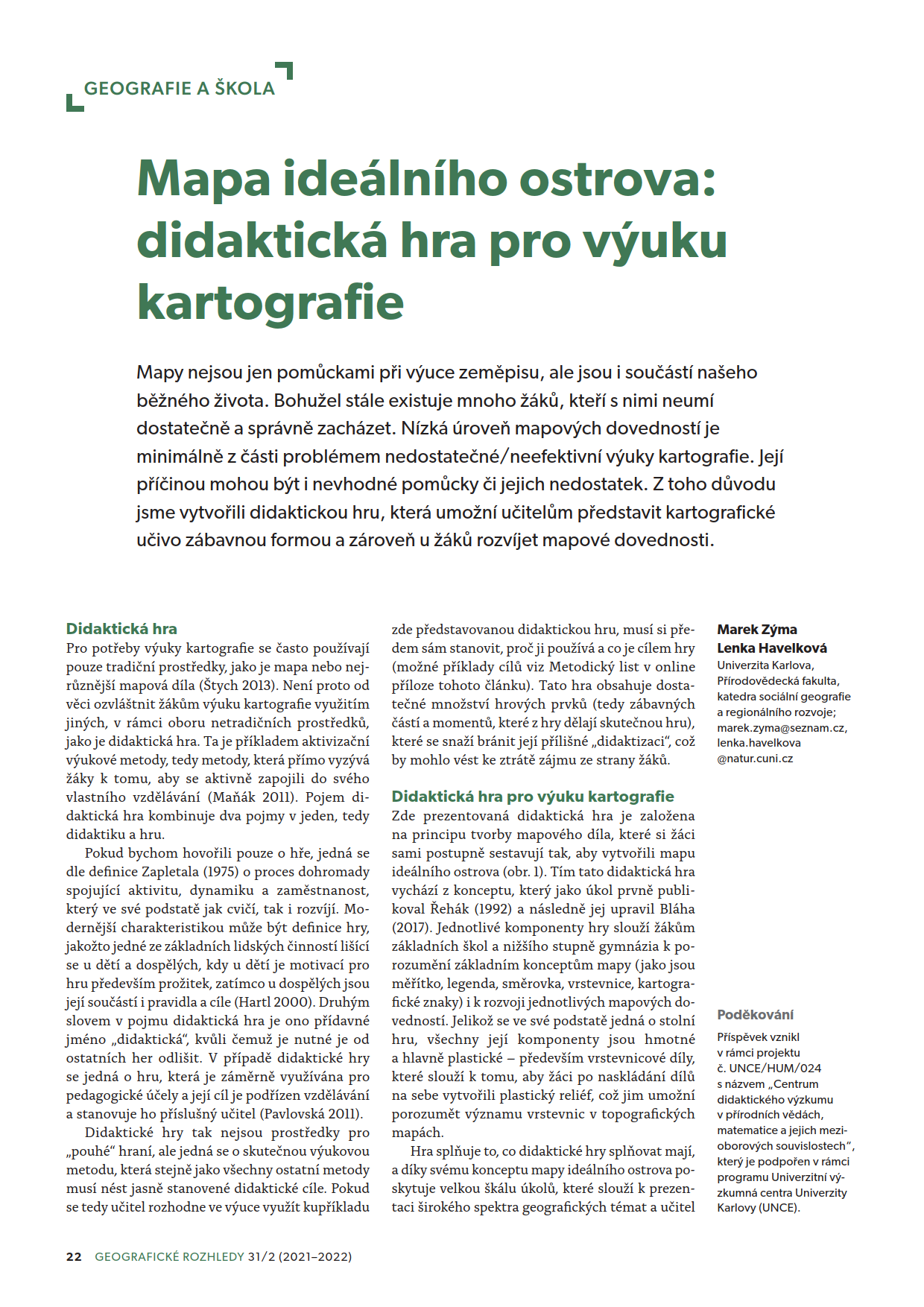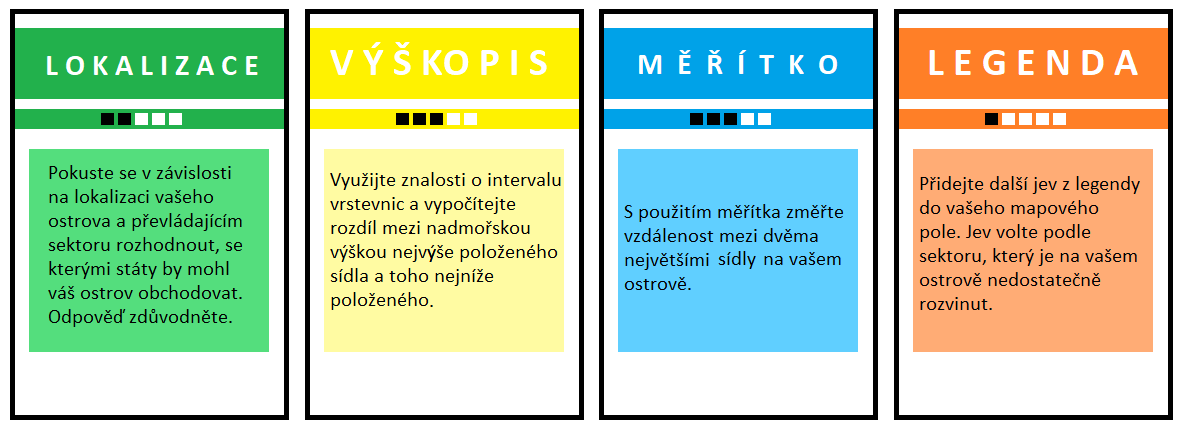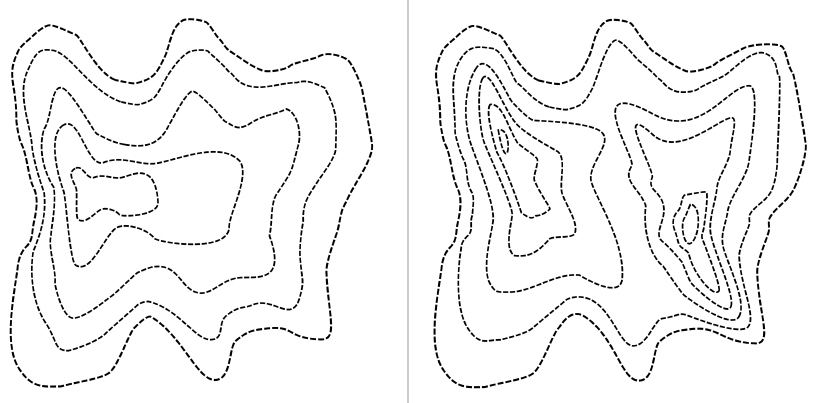Didactic game to teach cartography
There is a Czech saying that those who play games behave well. The phrase is usually used by parents, but teachers can use it as well – even though they may say: “Those who play also learn.” For many people, playing and education are two contradictory things, but thanks to methods of active learning, we can play and learn at the same time. One of such methods used in modern education are didactic games. .
A didactic game is a method of active learning. Its goal is to force the students to be active in their learning process instead of passively absorbing information.

Preview of the island's model after the first phase of the game
The main idea of the didactic game presented is to make students to learn cartography in a fun way. The game is aimed mainly at students of primary schools. The game helps the students to understand basic concepts and map elements (scale, legend, orientation indicators, contour lines, etc.) and to develop their map skills (reading, analysing, interpreting and creating a map). Students also practise other geographical skills.
The didcatic game is based on the concept of creation of an ideal island which was elaborated by Čapek and then developed by Bláha (2017). Using the materials, students create their ideal island. The process is limited by tasks so it is in line with the didactic goal of the class and so such island could actually exist. In the second phase of the game, the students work in groups and complete tasks using their own map. The tasks are on localization, elevation, scale and legend. For all the tasks, the students obtain from one to five points, depending on the difficulty.
Below, you can find all the materials necessary for this didactic game. This means: the board, informative cards, cards with tasks, special components, necessary instructions and methodological guidelines.
Game description and instructions
Summary description of the game (paper)

Brief guidelines
Methodical sheet for teaching
Detailed description of the game (see also the methodology)
Materials for the game
The board, for printers that can print in the A3 format
The board, for printers that can print in the A4 format

Cards – informative cards, cards with tasks, supplementary cards

Sample templates for the countour pieces